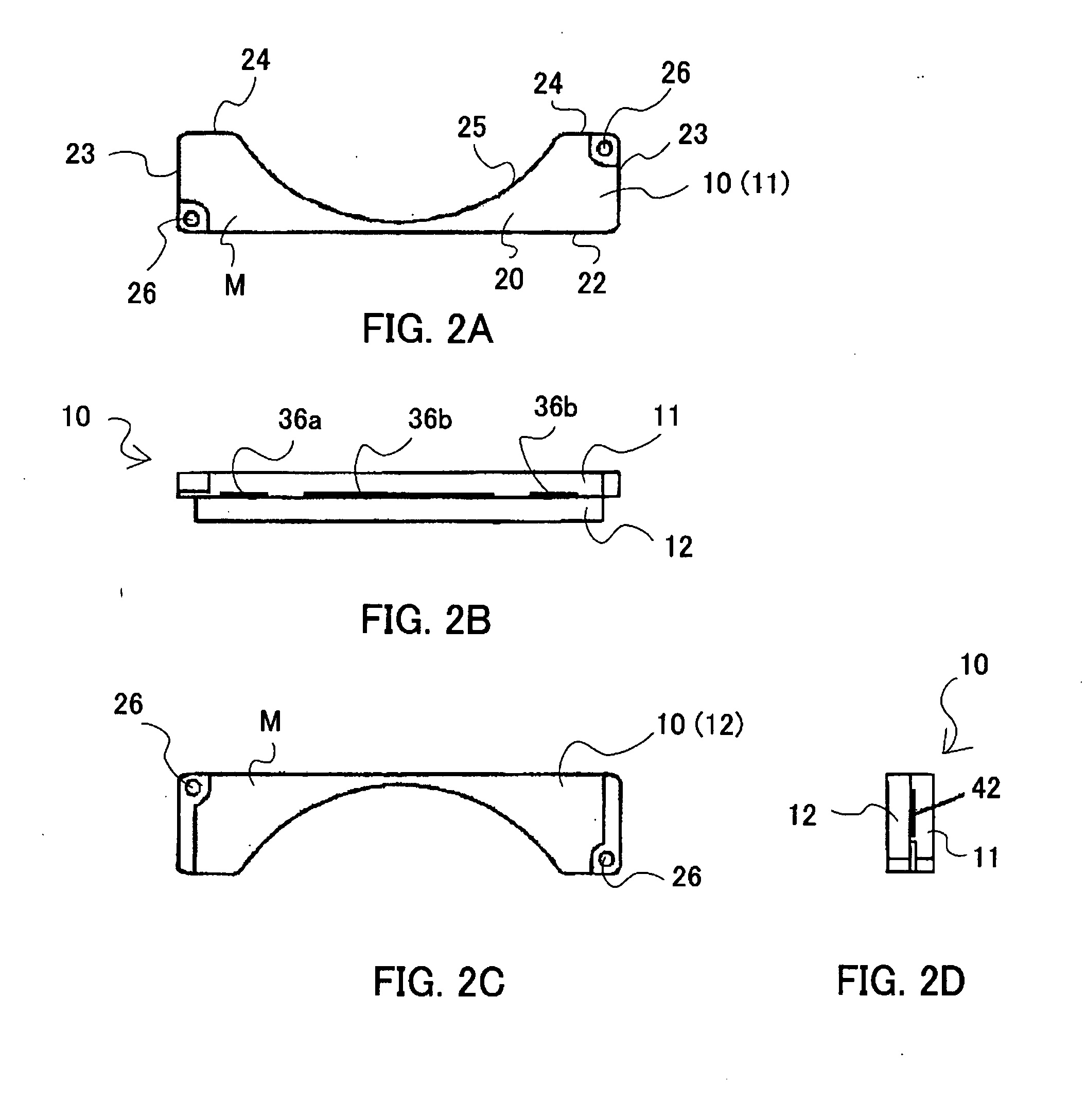Mold used for metal mold casting, and damper manufacturing method using the mold
a mold and metal mold technology, applied in the direction of foundry moulding equipment, instruments, foundry patterns, etc., can solve the problems of high material cost, high cost of metal molds, and high cost of corrosion protection treatment, so as to facilitate the subsequent cutting process, reduce vibration of housings, and improve filling performance
- Summary
- Abstract
- Description
- Claims
- Application Information
AI Technical Summary
Benefits of technology
Problems solved by technology
Method used
Image
Examples
Embodiment Construction
[0031]Referring now to the accompanying drawings, a description will be given of a method for manufacturing a damper (or weight) through metal mold casting including die casting. Referring now to FIGS. 1 to 2D, a description of a mold (or die) 10 used for metal mold casting will be given. Here, FIG. 1 is a schematic plane view of a movable mold (or die) 11 of the mold 10, but omits an ejector pin. FIG. 1 may be recognized as a schematic plane view of a cast with metal injecting part and over-flow wells right after molten metal cools down and solidifies. FIGS. 2A to 2D are schematic views of a mold (or die) 10. The mold 10 is fixed on a hot chamber casting machine. However, the present invention is not limited to a type of a casting machine, a cold chamber casting machine or another casting machine may be used.
[0032]The mold 10 includes the movable mold 11 and the stationary mold 12, and the movable mold 11 moves relative to the stationary mold 12. The movable mold 11 includes, as sh...
PUM
| Property | Measurement | Unit |
|---|---|---|
| specific gravity | aaaaa | aaaaa |
| specific gravity | aaaaa | aaaaa |
| specific gravity | aaaaa | aaaaa |
Abstract
Description
Claims
Application Information
 Login to View More
Login to View More - R&D
- Intellectual Property
- Life Sciences
- Materials
- Tech Scout
- Unparalleled Data Quality
- Higher Quality Content
- 60% Fewer Hallucinations
Browse by: Latest US Patents, China's latest patents, Technical Efficacy Thesaurus, Application Domain, Technology Topic, Popular Technical Reports.
© 2025 PatSnap. All rights reserved.Legal|Privacy policy|Modern Slavery Act Transparency Statement|Sitemap|About US| Contact US: help@patsnap.com



